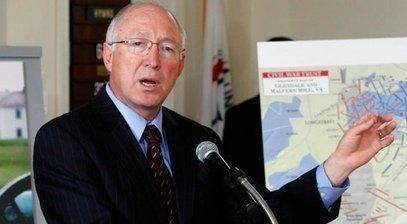Obama administration officials banned mining across one million acres of the most uranium rich land in the United States for 20 years using questionable science to back up their claims that uranium production would adversely affect the environment.
That’s according to key Republicans on the House Natural Resources Committee, which has released internal emails from government scientists stating that some environmental impacts were “grossly overestimated” and “very minor to negligible.” “These emails raise serious concerns about whether the Obama administration’s decision to block uranium production in Arizona was based on politics rather than sound science,” said Rep. Doc Hastings (R-Wash.), chairman of the House Natural Resources Committee.
“The administration’s unilateral action to block uranium development on this land threatens America’s energy security and ignores numerous studies showing that it can be done safely in an environmentally conscious manner,” Hastings said.
The committee is investigating Interior Secretary Ken Salazar’s January decision and is demanding that the administration turn over by June 11 more documents, including emails, notes, briefing papers and memos by 70 agency officials, in order to determine if the decision was based on politics rather than science.
“In making this decision, you argued the withdrawal was necessary to protect drinking water sources,” Hastings and Rep. Rob Bishop (R-Utah), said in a May 23 letter to Salazar. “However, the administration’s own review of the potential impacts of uranium mining to the environment as well as studies by the state of Arizona do not support the one million acre withdrawal imposed by the department and, in fact, show that uranium development can be done safely in an environmentally conscious manner,” the lawmakers said.
The decision effectively withdraws one million acres in northern Arizona from uranium mining for 20 years, voiding a long-standing agreement reached by the mining industry and environmentalists in 1984, and trumps a law that effectively sealed the deal.
In announcing the ban, Jonathan Jarvis, park service director, said the ban would protect the Grand Canyon, a World Heritage designation. “As stewards of our national parks, it is incumbent on all of us to continue to preserve our treasured landscapes, today and for future generations,” Jarvis said.
Emotional PR campaign
Western lawmakers who opposed the decision said it was fueled by an emotional public relations campaign suggesting the low-impact mining would devastate the nearby Grand Canyon and water quality in the Colorado River.
The new documents released by the committee show findings by some National Park Service scientists back up the lawmakers’ concerns. One internal email written by a hydrologist said the environmental study “goes to great lengths in an attempt to establish impacts to water resources from uranium mining.”
“It fails to do so, but instead creates enough confusion and obfuscation of hydrologic principles to create the illusion that there could be adverse impacts if uranium mining occurred,” the hydrologist said.
Another park service official wrote that this is a case “where the hard science doesn’t strongly support a policy position.”
Bishop, who chairs the Natural Resources subcommittee on national parks, forests and public lands, says the initial documents they obtained show alarming new evidence that the administration lacked scientific justification to impose the ban.
“It is now increasingly apparent that the decision was motivated by politics rather than science as the administration would have us believe,” Bishop said. “These emails illustrate that Secretary Salazar blatantly ignored the scientific analysis in order to advance the administration’s narrow-minded political agenda. The administration is working hard to protect certain interests, but just not those of the American people,” Bishop said.

